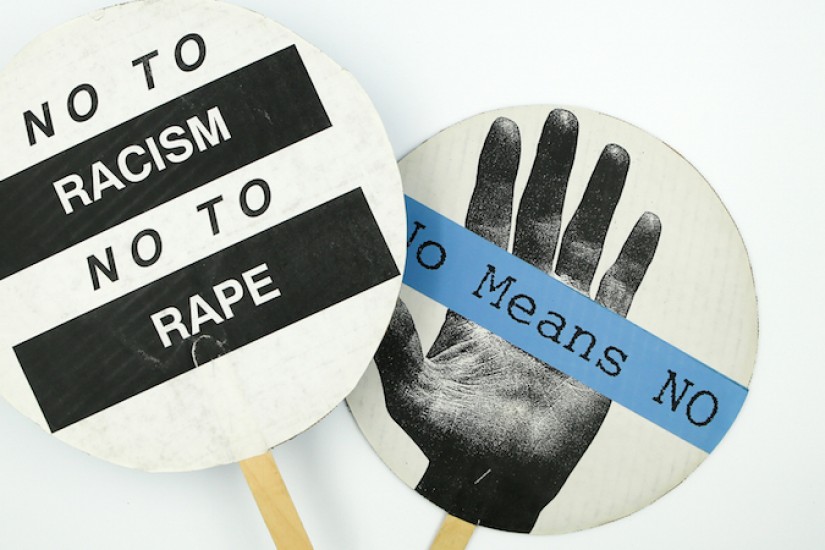Jeanjean and Tochilovsky started thinking about this show several years ago, motivated more by the school’s history than a social sensibility. In 1914, Cooper Union (then known as the Cooper Institute) hosted a talk called “What is Feminism?” Twelve speakers—six men and six women as though it were a jury, though who or what was on trial is another question for another time—were invited to speak for 10 minutes each. One speaker, Frances Perkins, activist and future Secretary of Labor, said feminism was a revolution and she identified above all else as a revolutionist. “I believe in revolution as a principle,” she said. “It does good for everybody.” A later meeting would include speeches by the labor organizer Rose Schneiderman and the writer Charlotte Perkins Gilman.
After the 2016 presidential election, the historic parallels took on a new urgency. Both essential and immediate, every statement about our time had an obvious analog to the past. Yet the school does not have an official connection to protest, Jeanjean told me. What they provided was an arts education for women at a time when they were not supposed to receive anything like that; to teach them a trade when many white women were not supposed to think of themselves as workers. In their admissions archives, they can see the women who applied for financial aid, explaining why they needed to attend what was then called The New York School of Design for Women at Cooper Institute, separate from the general population from its founding in 1852 until 1859.
“They’re pretty much kids by themselves trying to face the economical situation of the late 19th century,” Jeanjean explained, “knowing there’s very little work for women, knowing what will happen without family support or marriage. It wasn’t only about education, but opportunities to become autonomous and independent.” This is particularly true of printmaking, which has much in common with industrial design and less with the artistic practices typically associated with leisure activities for upper-middle-class women.
